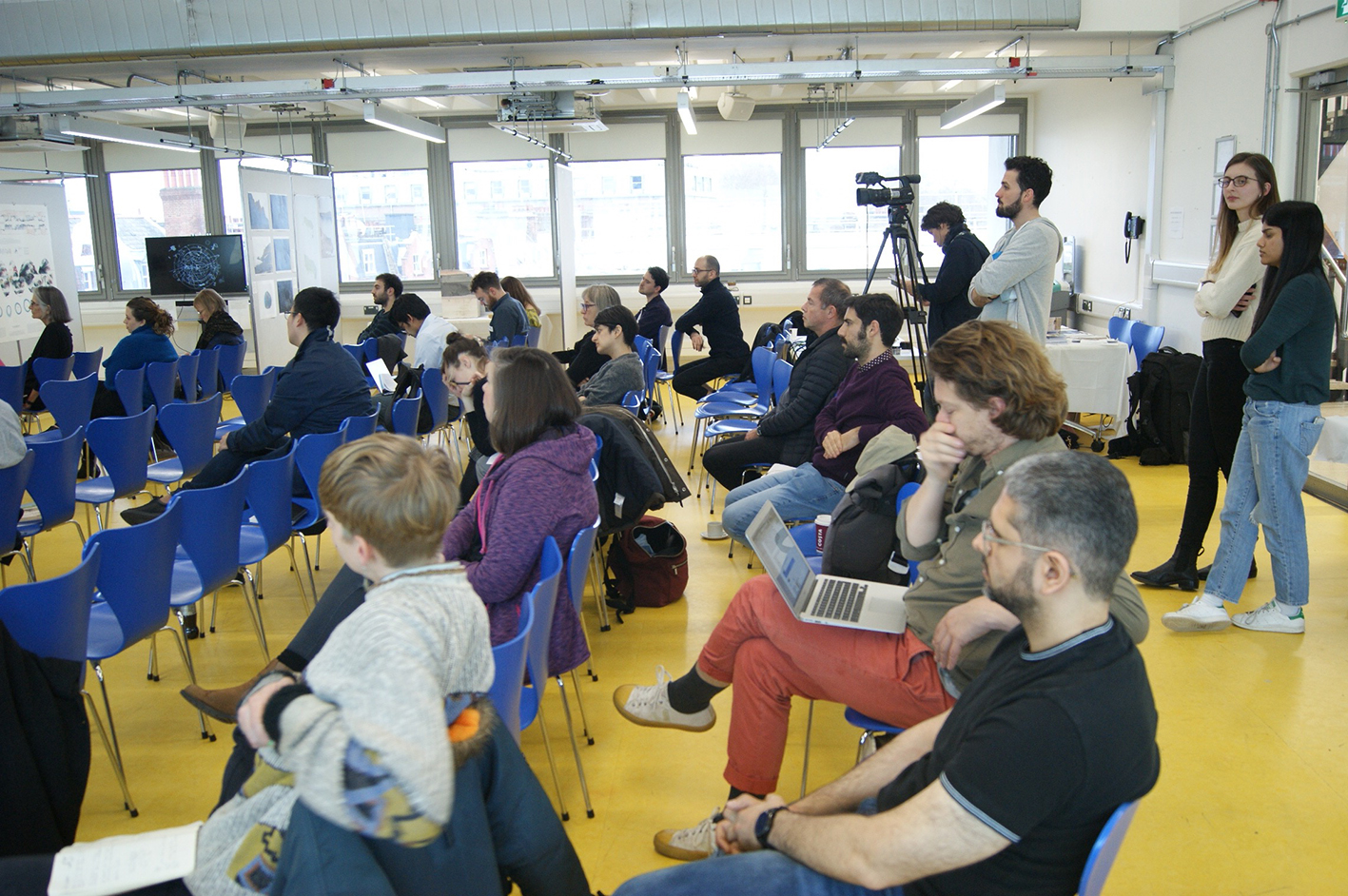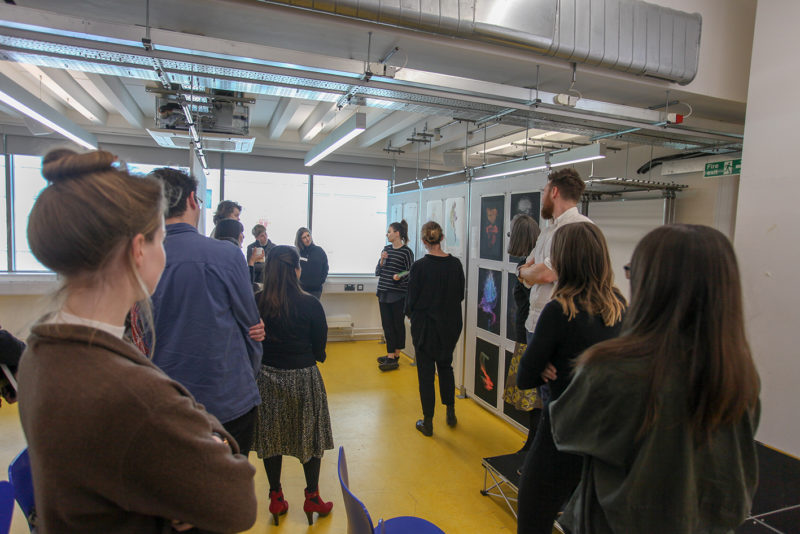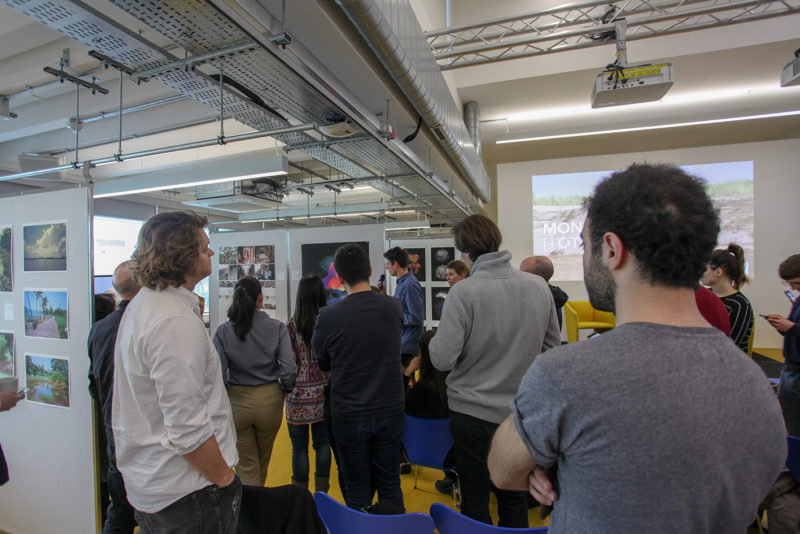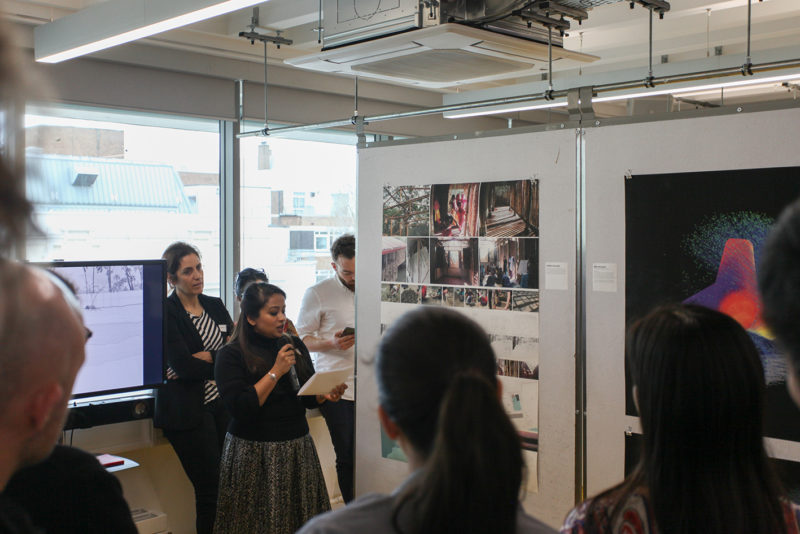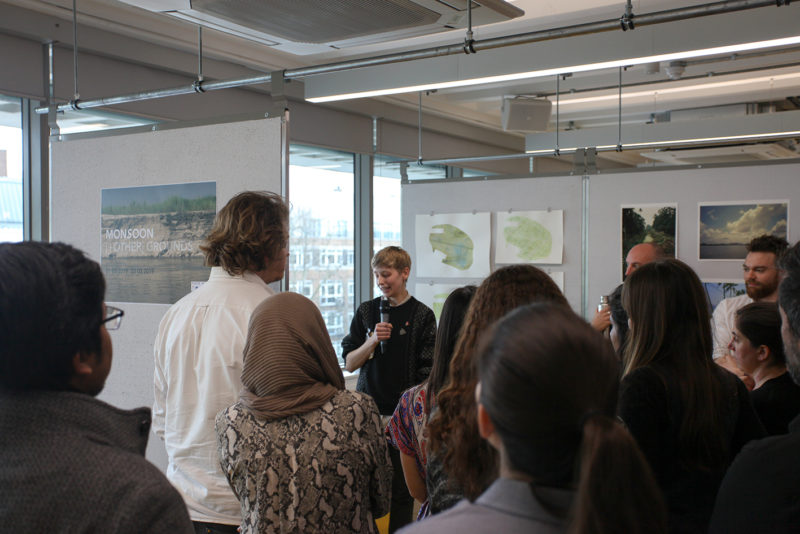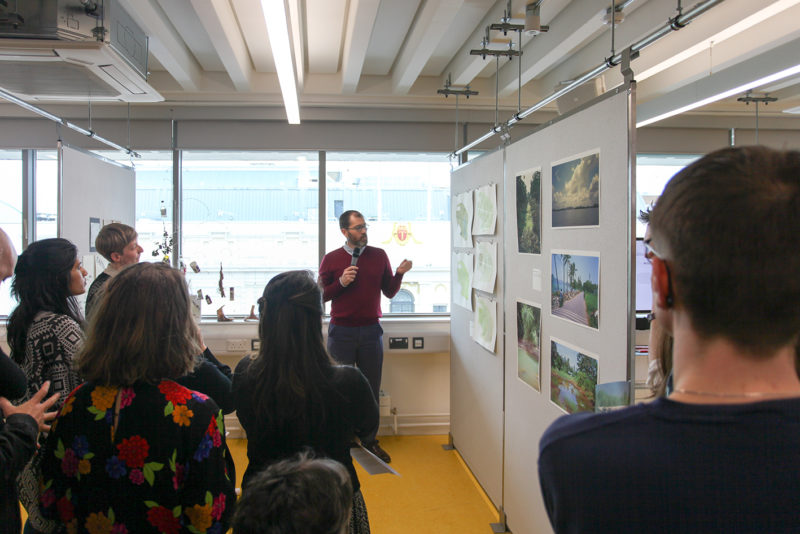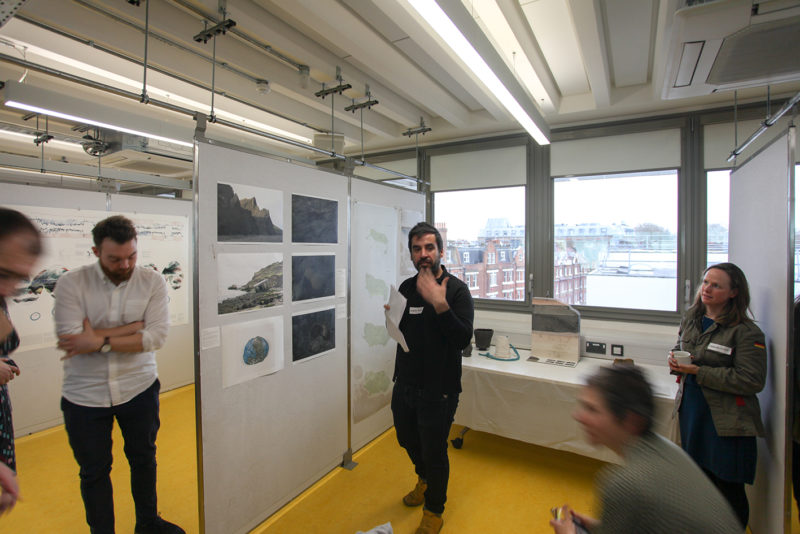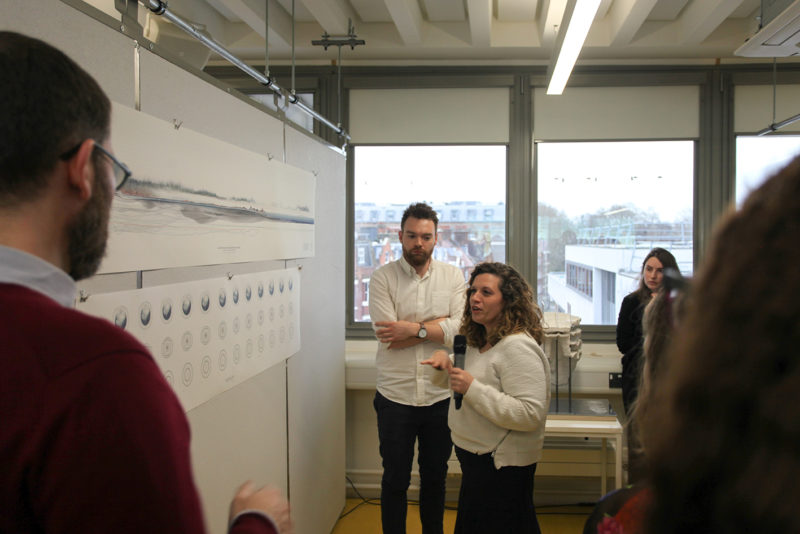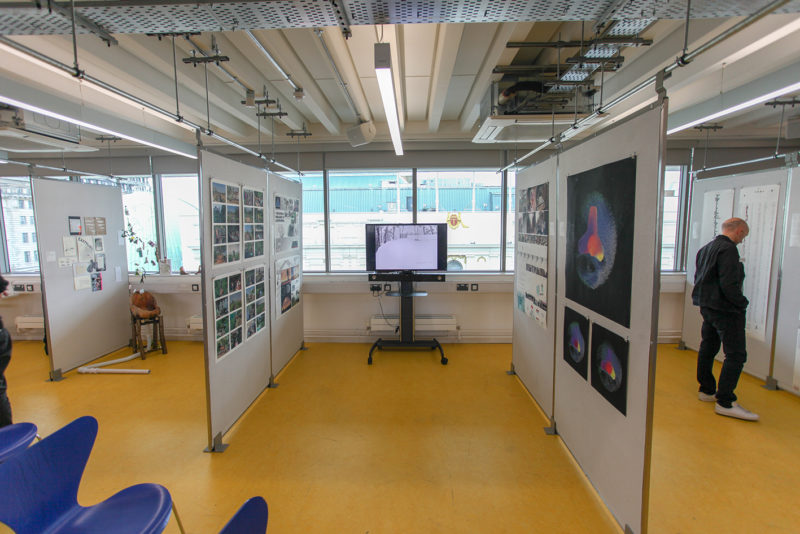The third MONASS symposium and exhibition, Monsoon [+other] Grounds took place at the University of Westminster on the 21 and 22 March, 2019. It following Monsoon [+other] Airs and Monsoon [+other] Waters, which had been held in 2017 and 2018. The symposium brought the monsoon down to earth so to speak, as a seasonal designer of soils and grounds. Each year monsoon waters scour river banks and fertilise flood plains as they carry vast quantities of sediment from mountains to the sea. In monsoonal regions, the pulse of life is linked to the annual cycle of its hot dry summers, inundating rains and retreating winds. Cropping patterns and management strategies respond to its variability, connecting farmers and agriculture with meteorology and atmospheric science. Human rituals celebrate these cycles – the parched earth, the bursting rains, bountiful harvests and the monsoon’s retreat. Considerations of monsoon grounds draws attention to the microbial origins of bio-politics, territory and nationhood. Since the 1970’s, the chemistry of grounds has been altered by fertilisers and pesticides, triggering political and economic disputes and giving rise to fortunes and failures. Territory has been converted into real estate, undoing intricate relations between grounds and their waters and unravelling human relations with them, and the metallurgical alchemies of the construction industry have transformed clay, silt, sand and sediment into the building blocks of everyday life.
In response to this framing, a diverse group of scholars, students, artists and practitioners from a range of disciplines, backgrounds, practices and institutions assembled at the University for Westminster or a day and a half of deliberations.
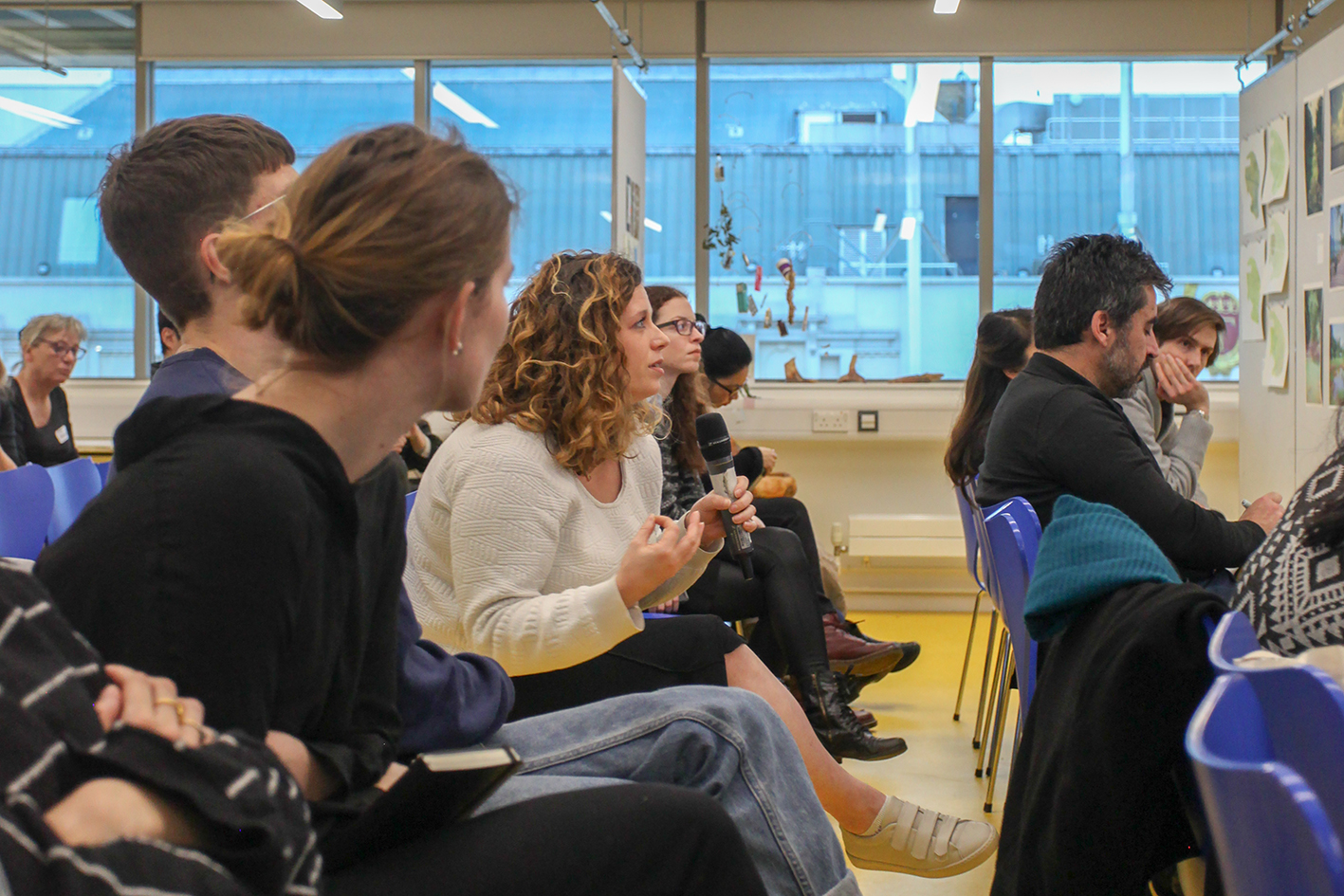
Proceedings began with a walkabout of an exhibition of work submitted to the symposium organisers in response to the call for contributions, led by MONASS researcher/curator John Cook. Alexander Arenes offered a short explanation of her drawing and video titled ‘Architectural Design at the time of the Anthropocene: A Gaia-graphic Approach to the Critical Zones.’ This was hung adjacent to the MONASS drawings by Christina Geros and John Cook currently also showing on the Milan Triennale, Broken Nature, which were accompanied by a model of the earth’s crust built for MONASS by Tom Benson and Thomas Blain. This planetary scaled work was matched by work engaging with monsoon [+ other] grounds at a more material and human scale – Matt Barlow’s photographs taken in field work in Cochi, Kerala; Eric Guibert’s water colours of the garden he tends in France; Corinna Dean’s models, castings and drawings conducted during residency on the Isle of Sheppey; Tumpa Husna Yasmin Fellows drawings and animations of a participatory process to design and build a community building in Rajapur, Bangaldesh; the work of Blue Temple an architectural practice in Yangon to activate a linear water supply pipeline into a community spine; Ben Pollock and students of Design Studio 18 (Raymond Bieler, Fiona Grieve, James Purchon, Charlotte Grasselli, Aimee Daniels, Dagmara Dyner, Sara Kosanovic and Ionna Ungureanu) presented mappings and simulations of material processes at work in the Maldives and Myanmar; Hari Byles, a researcher and compostist discussed her work on alternative approaches to sanitation, represented by a composting toilet, a hanging mobile and a zine.
This exhibition provided a rich, diverse set of images to reflect on during the symposium that followed.
Exhibition Walkabout
The symposium then opened with a panel titled [MULTI] GROUNDS chaired by Ed Wall that included two presentations, one by Lindsay Bremner ‘On Sediment as Method,’ and one by Ifor Duncan on ‘Sedimentary Witness.’ Both explored the elemental forcefulness of sediment in the construction of precarious fluvial landscapes. Bremner made use of three material concepts – weathering, saltating and alluviating to discuss sediment as method and Duncan’s discussed sediment as a material witness to the genocide of Aushwitz-Birkenau, exposed when the drought in central Europe in 2015 performed an unexpected archeology.
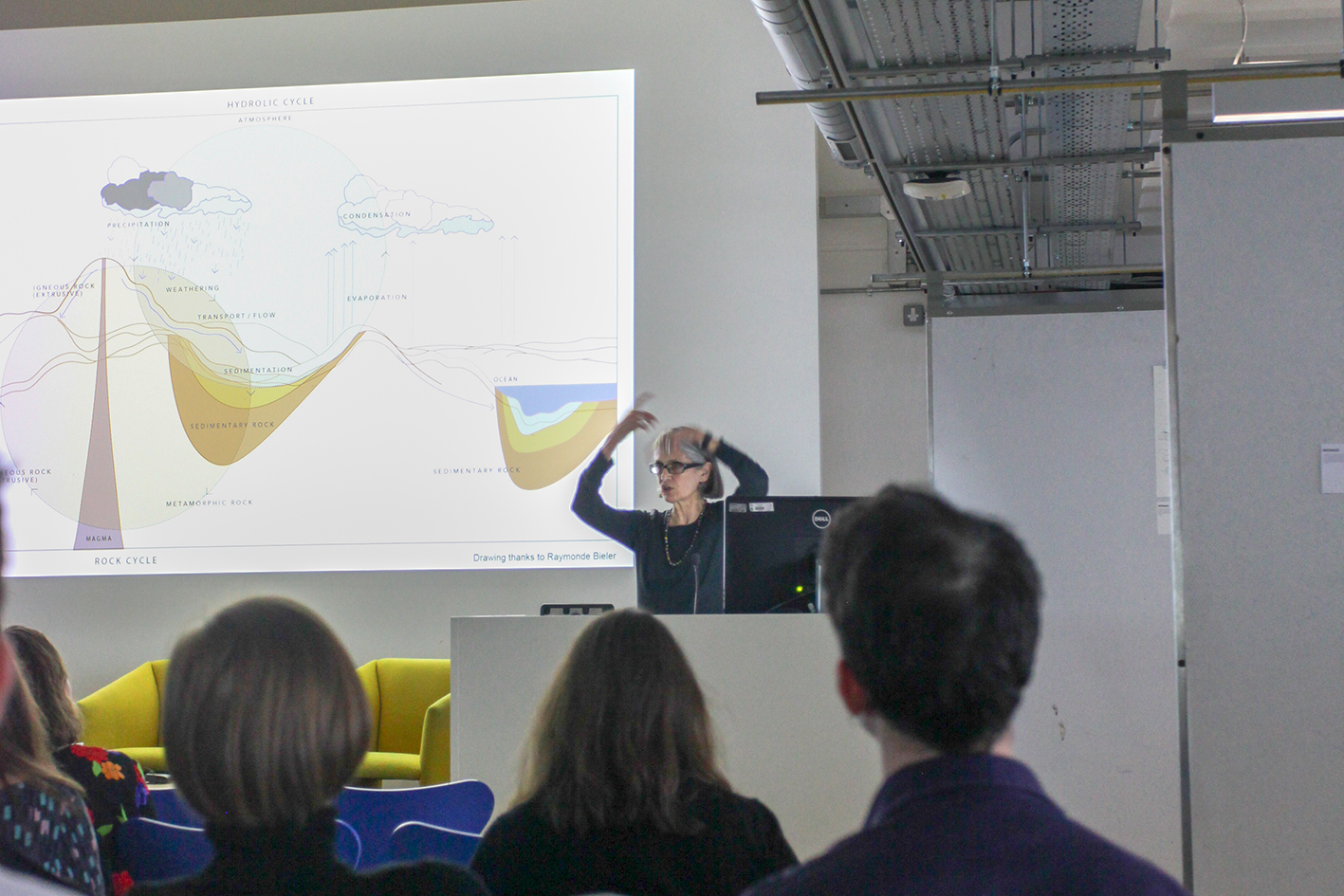
Lindsay Bremner
Tim Ingold followed with a keynote lecture titled ‘What on Earth is the Ground,’ drawing in live time as he spoke in an inimical way.
He structured his presentation around three analytical concepts – inscription, erosion and eruption, arguing that grounds are the consequence of atmospheric erosion, geological eruption and human inscriptions. Using the palimpsest as model, he provided a reading of the ground as an inscribed surface, in which the oldest layers lie on the top, the newest on the bottom, thereby challenging a stratigraphic reading.
“I’ll think of Tim Ingold drawing for years to come!” Jonathan Cane.
The second day of the symposium began with a panel titled [OVER] GROUND MATTERS, chaired by Godofredo Pereira. It included Alexander Arenes’ presentation on ‘Mapping the Critical Zone,’ Christina Geros’ on ‘Here be dragons’ and Avi Varma’s on ‘Unjust Intonations.’ Arenes and Geros tackled questions of the use of cartographic and other graphic conventions to re-conceptualise and re-map the earth at the scale of the globe. Arenes discussed her approach to mapping the critical zone, an idea she developed with Bruno Latour and Jerome Gaillardet (2018) by turning the earth inside out, while Geros unpacked her representation of the monsoon as a global system of dynamic atmospheric pressure zones. Avi Varma dealt with very different questions – the epistemicide wrought on Raga Mian Ki Malhar, the north Indian classical music system when the harmonium was introduced by British colonisers, and its relation to ecocide. The panel concluded with questions by Pereira about the politics of the cartographic representations in the light of Varma’s eco-political and epistemological critique.

Godofredo Pereira introducing Christina Geros
This was followed by a panel titled [INTER] GROUND MATTERS chaired by Kirsten Hastrup that brought together presentations by Owain Jones on ‘Monsoons and Tides,’ and Jonathan Cane on ‘Permeability, Ocean, Concrete.’ Jones made a number of observations on the relationships between the temporalities of monsoons and tides and their and convergences, while Cane introduced the audience to the ‘dolos,’ a concrete coastal protection unit invented by South African engineers in the 1960’s, and undertook a multi-species, queer analysis of its history and permeability.
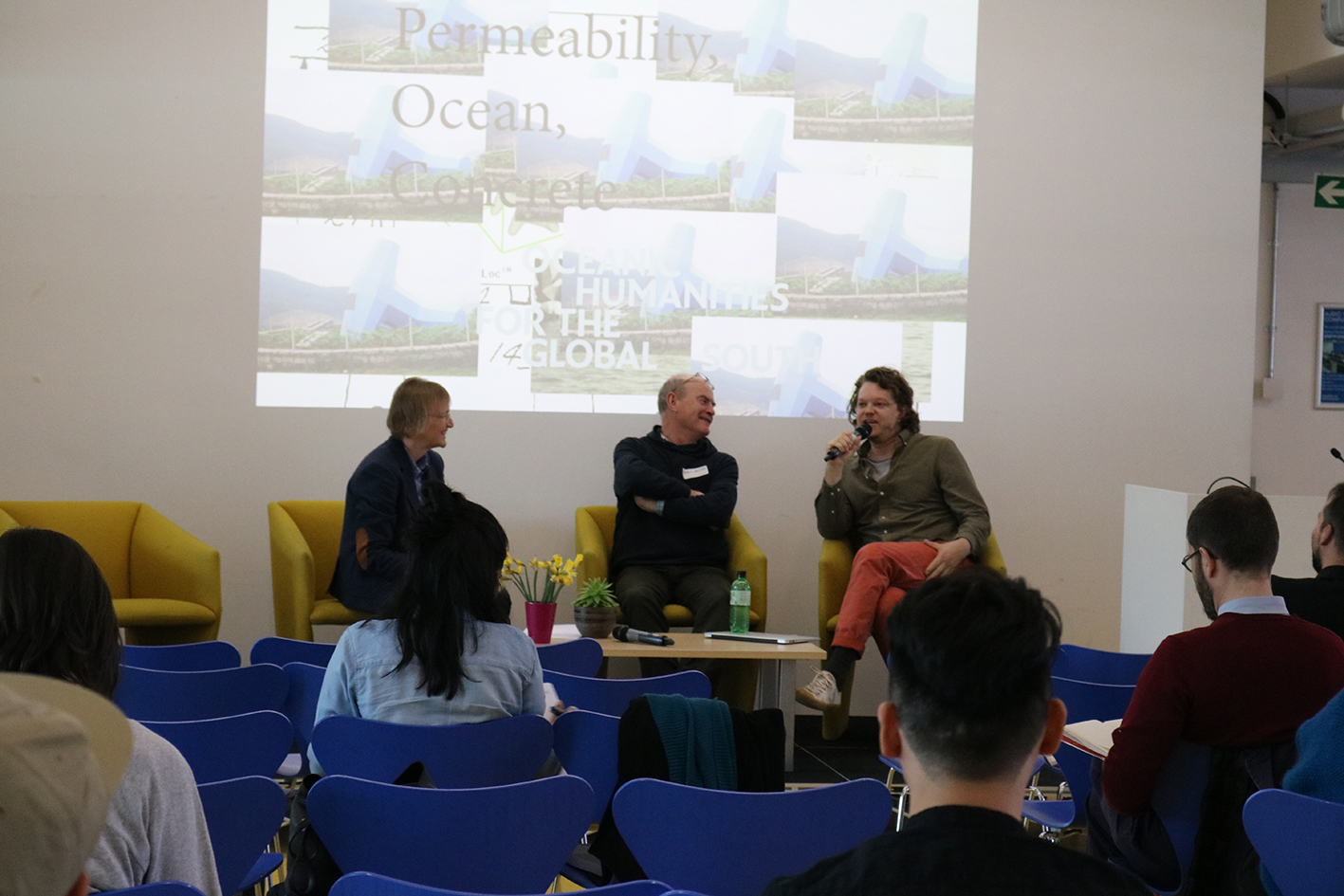
Kirsten Hastrup, Owain Jones, Jonathan Cane
The symposium then adjourned for lunch. It was served as a feast of soils – long tables laden with lentils, vegetables, and dishes of humous accompanied by bread and potato wedges, which conference attendees dug into with trowels. The idea was one MONASS borrowed from the Multispecies Storytelling in Intermedial Practices Conference at Linnaeus University in January 2019, which Beth Cullen and Harshavardhan Bhat had attended. Thank you for the idea!
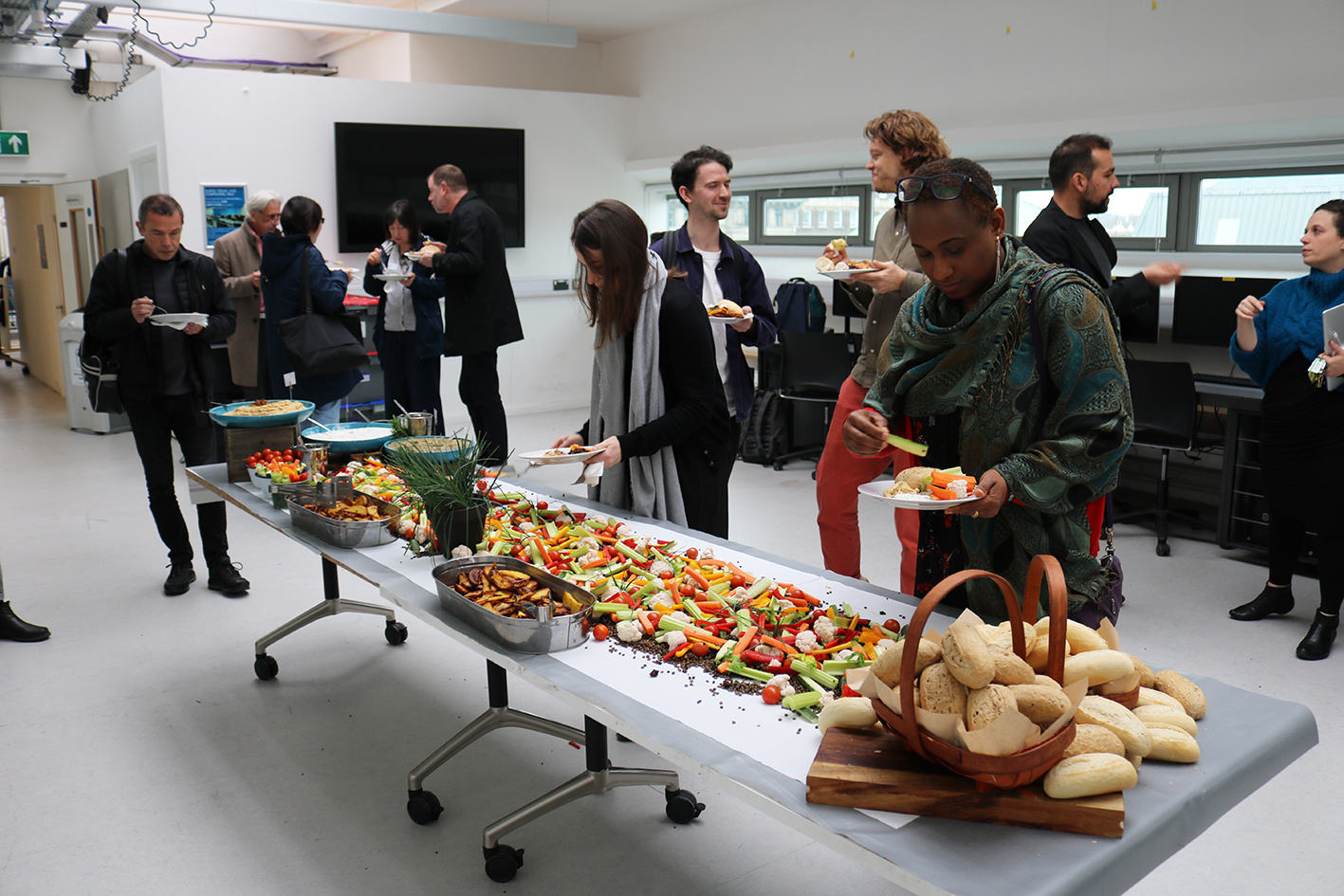
Convivial Soils enjoyed by Aisha Forde, Jonathan Cane, Ifor Duncan, Alexandra Arenes and David Chandler
After lunch, the symposium reconvened for a panel chaired by Tim Waterman titled [UNDER] GROUND MATTERS, when Anthony Powis spoke on ‘The Materiality of Ground Water: leaking, Seeping, Swelling, Cracking,’ and Matt Barlow on ‘Floating (under) Ground.’ These two presentations delved into two of the most politically charged ecologies in India today, ground water and waste. Powis’ paper was a reflection on the transcorporeality of ground water based on an incident of ground water eruption in the construction of the Chennai Metro, while Barlow spoke on cultures of waste, based on his field work in Cochi, Kerala.
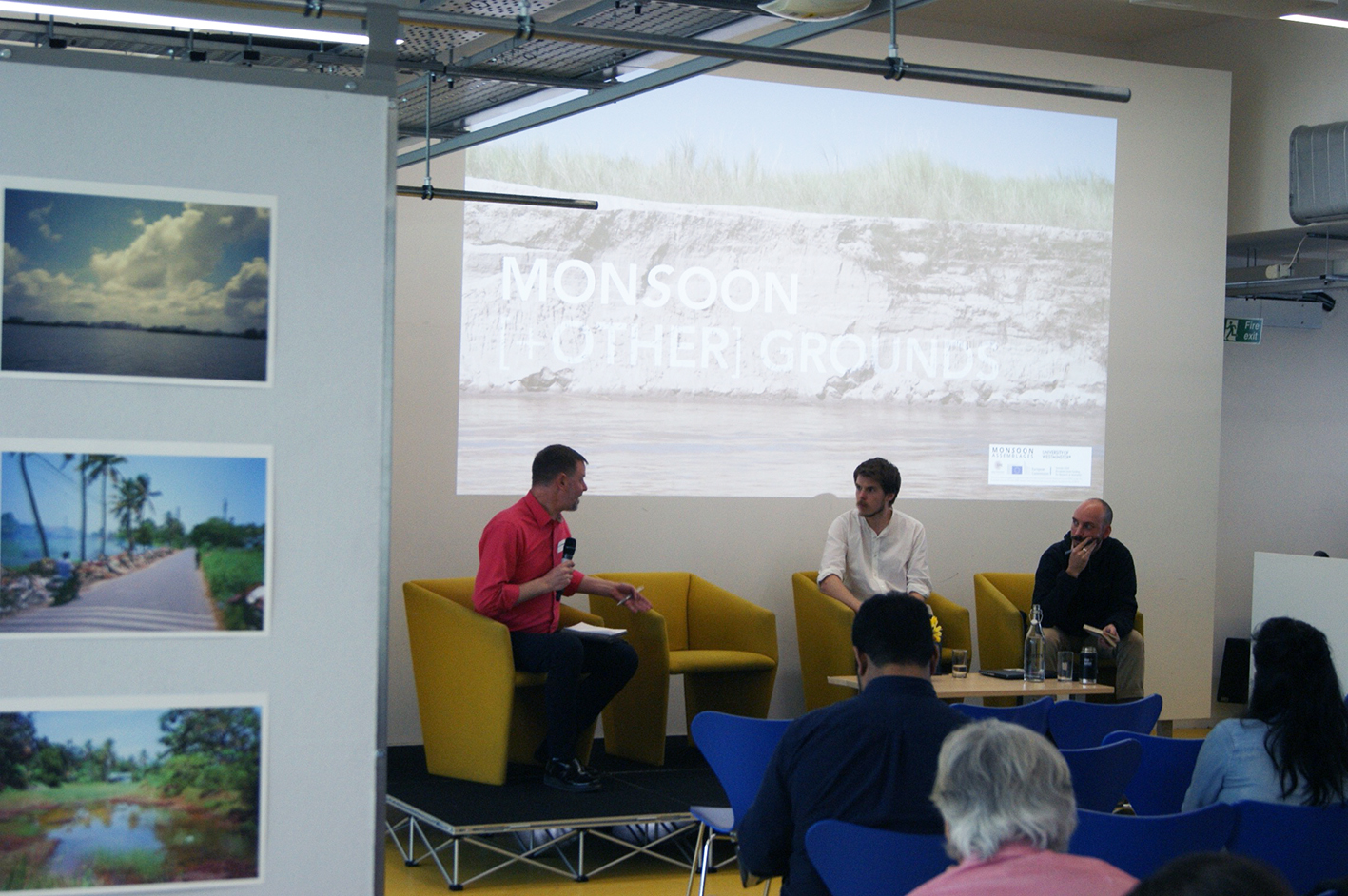
Tim Waterman, Anthony Powis, Matt Barlow
This was followed by a panel titled [IN] GROUND MATTERS, chaired by Jose Alfredo Ramirez, which featured Eric Guibert’s ‘A Letter from the Soils I have worked with’ and Harshavardhan Bhat’s paper, ‘About a Monsoon Forest.’ Guibert’s epistolary form built empathy and respect for soils and challenged the human-centric idea of eco-system services. Bhat’s paper, based on his field work on the Aravalli Ridge in Delhi, re-thought the relationship between air and ground as one of violence – the violence performed by air in forcing moisture out of ground, by way of the invasive species, Prosopis Juliflora.
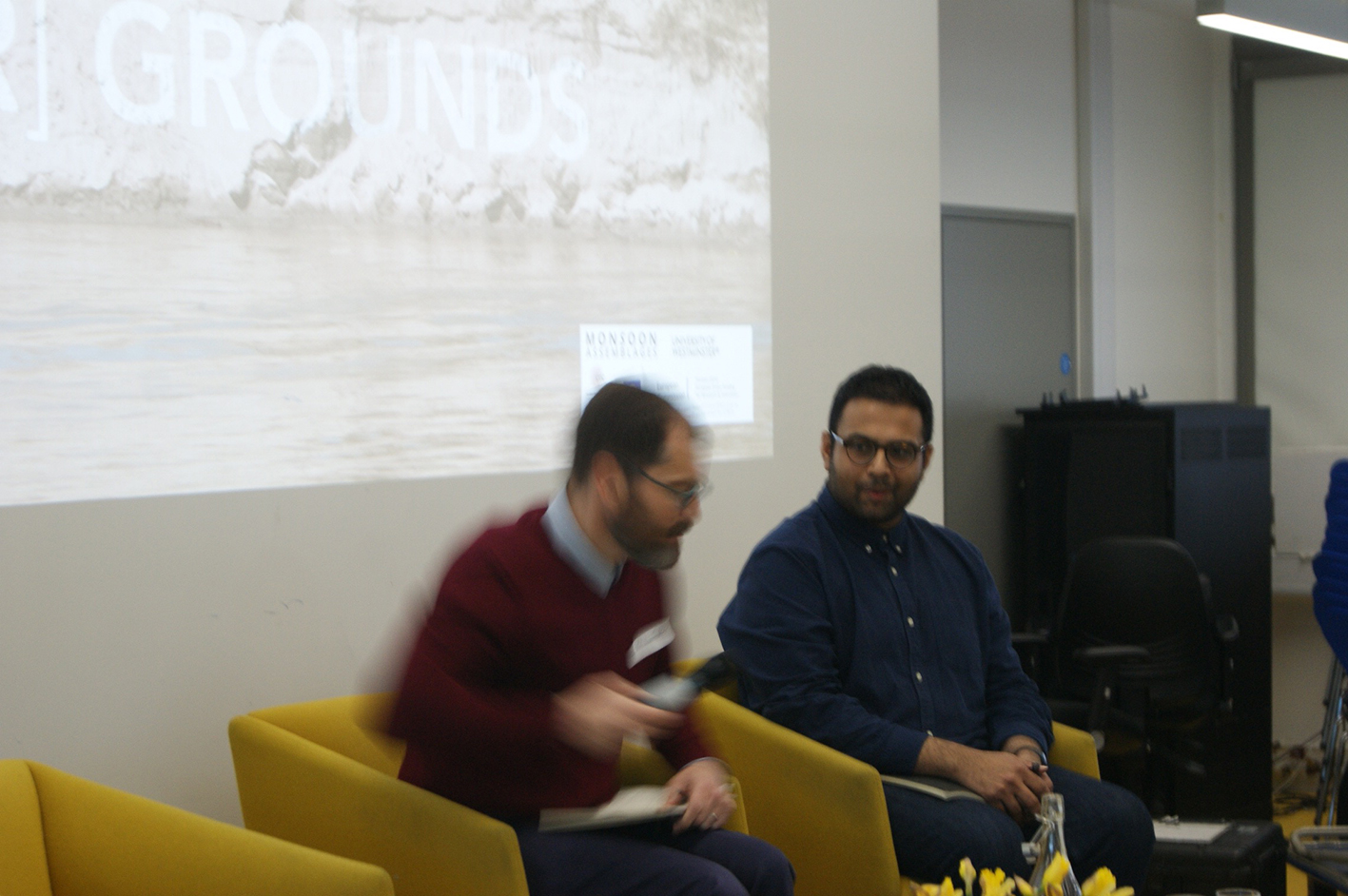
Eric Guibert, Harshavardhan Bhat
The final panel of the day, [WITH] GROUND MATTERS was chaired by Lindsay Bremner and featured a paper and video by Beth Cullen on ‘Brick: Cycles of Making and Unmaking Monsoon Grounds’ and Labib Hossain on ‘A critical reading of the Dry and Permanent Ground through the Practice of Muslin Weaving in Bengal.’ Both thought the rhythms of monsoon grounds through situated practices in Bangladesh, one of brick making and the other of textile weaving. This provided a fitting end to a day that had begin with the planetary, ending it with depictions of sensory engagement between grounds, plants and human bodies.
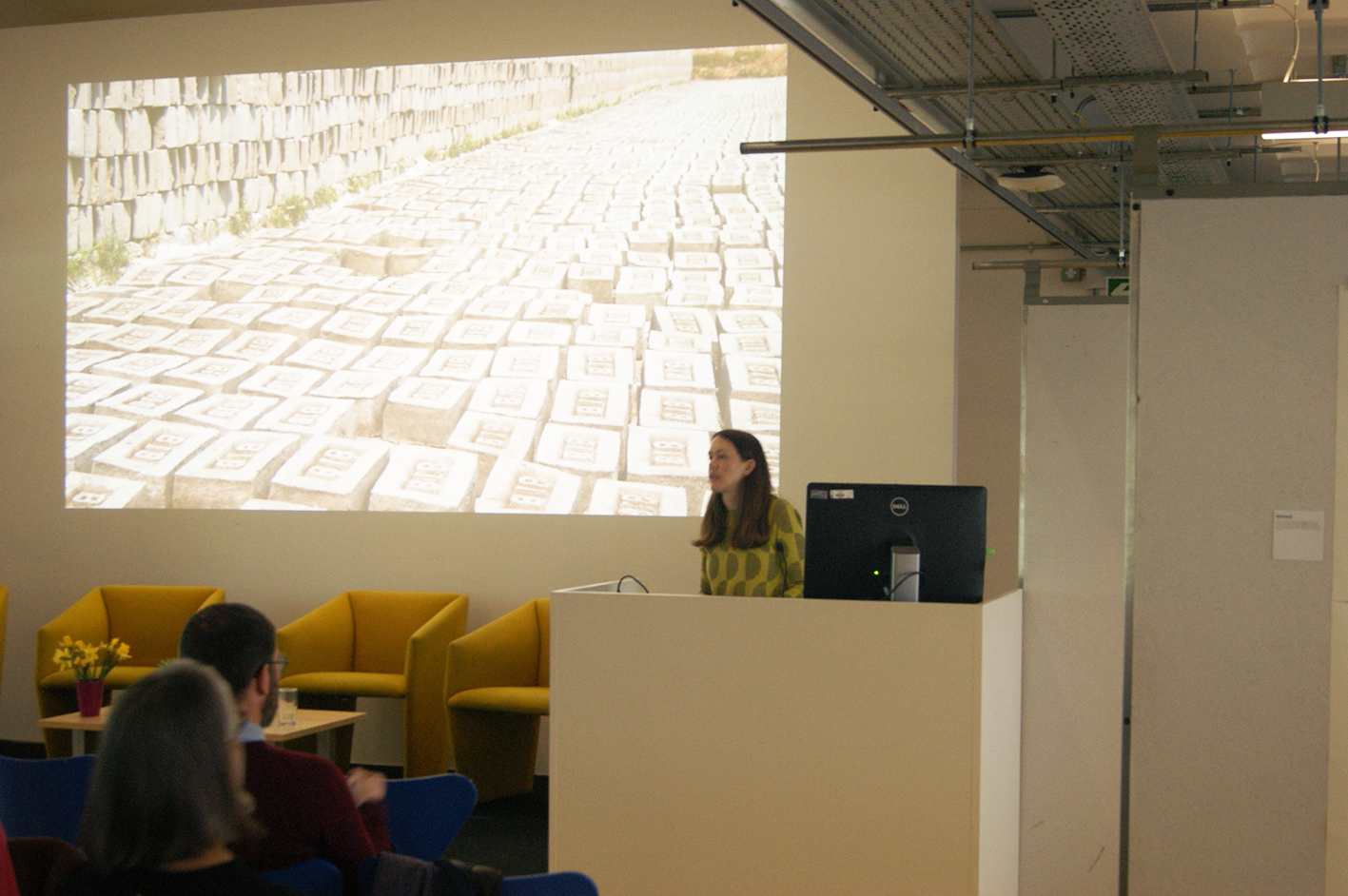
Beth Cullen
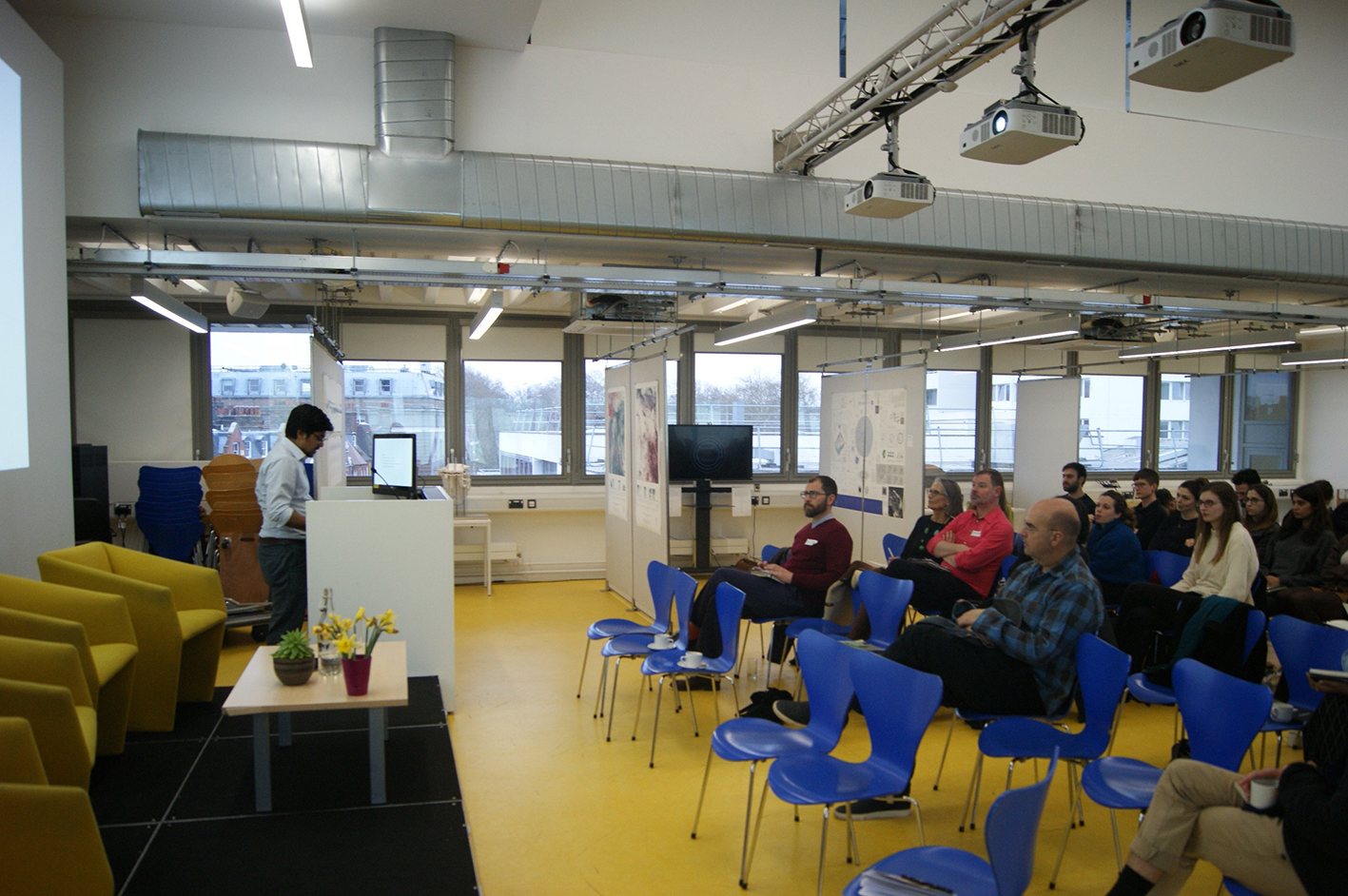
Labib Hossain
David Chandler provided concluding remarks. He questioned the absence of an [ON] GROUNDS panel at the sympsoium. For him this had resulted in the exclusion of the human and the silencing of politics. He made an appeal for figures and collective political systems to be brought back into the discussion.
The full symposium programme, including abstracts is available here: 190322 – Monsoon Grounds Programme
Videos of all presentations are posted on the Monsoon Assemblages YouTube channel.
Many thanks to Beth Cullen, Christina Geros, John Cook and Aisha Forde for taking responsibility for organizing Monsoon [+ other] Grounds. MONASS will be producing an edited publication of the symposium proceedings by the end of 2019.
